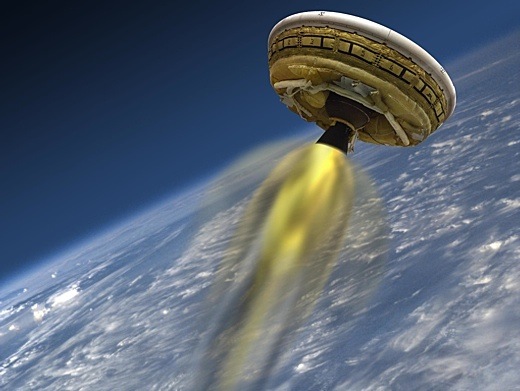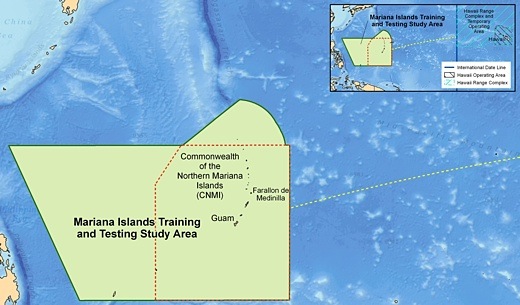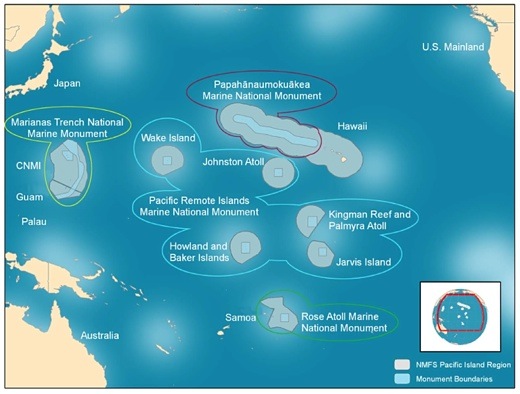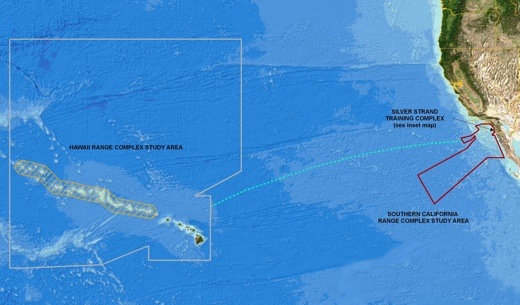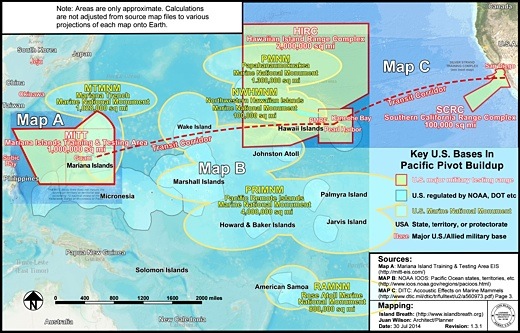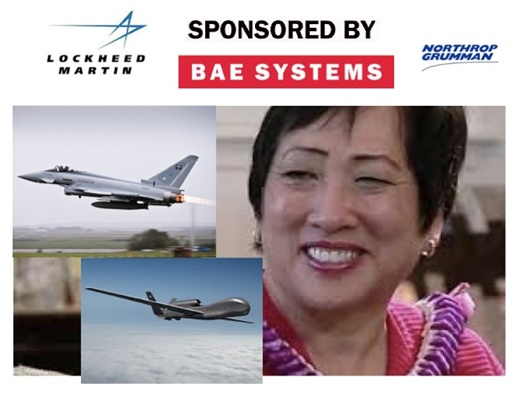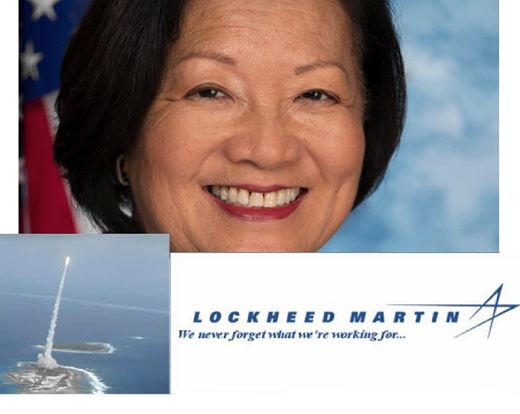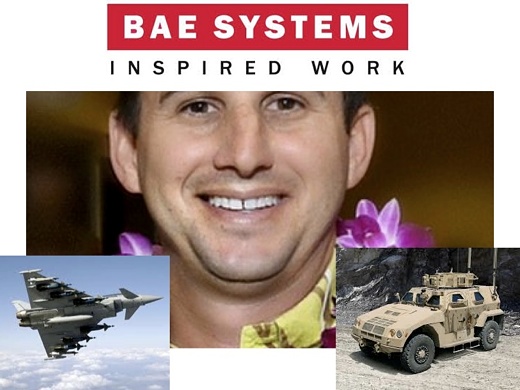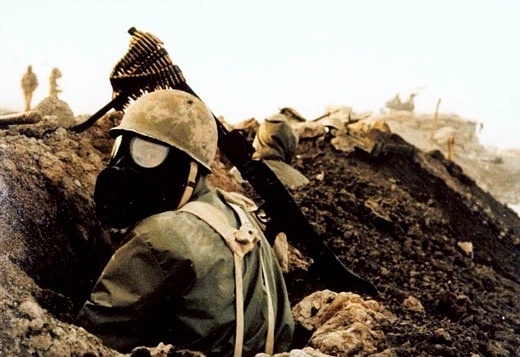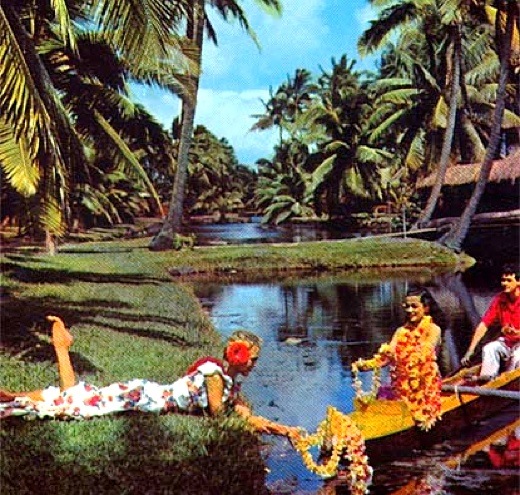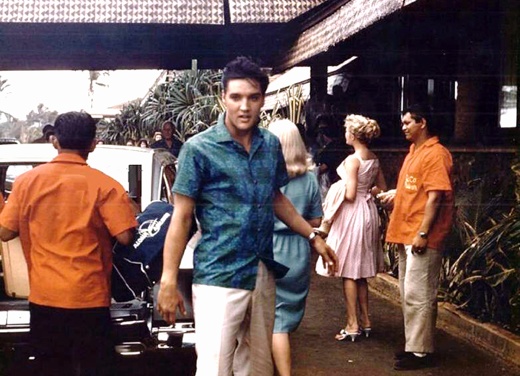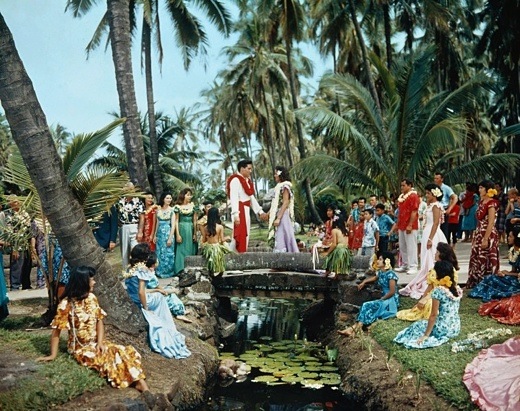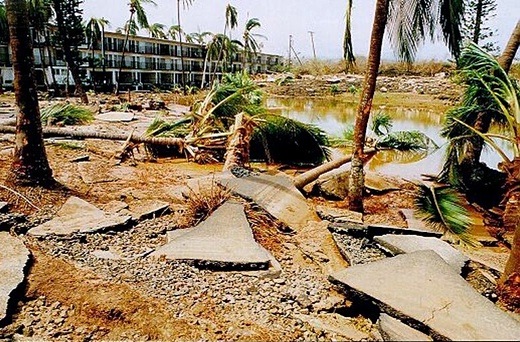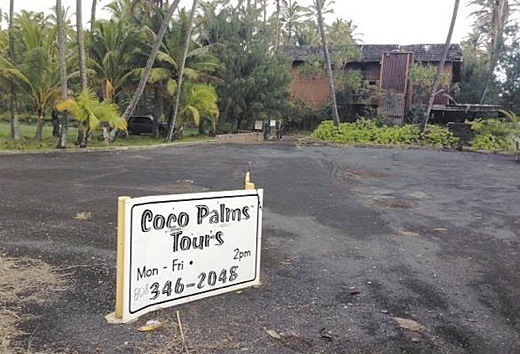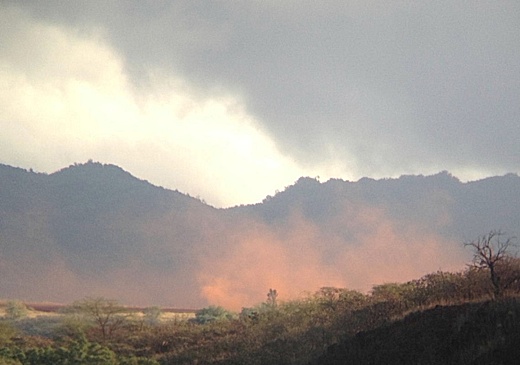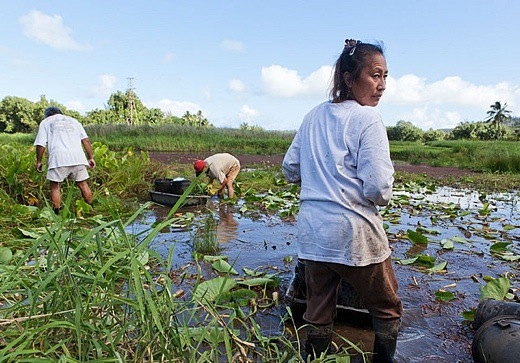SUBHEAD: The PMRF on Kauai and what the increasing military presence in the Pacific means for Hawaii and the world.
By Jon Letman on 26 June 2014 for Hawaii Independent -
(
http://hawaiiindependent.net/story/pmrf-kauais-biggest-bang-is-out-of-sight)
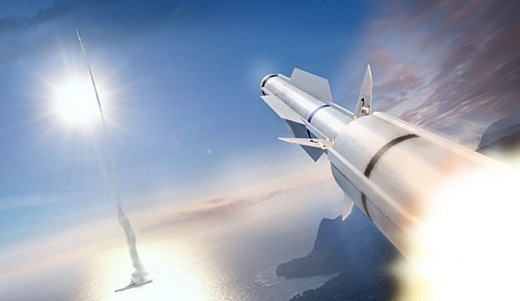 Image above: The Navy announced on 5/21/14 the first live-fire test of Raytheon's SM-3 landbased missile from the PMRF. It is a variation of Lockheed Martin’s Aegis missile defense system. From (http://www.inquisitr.com/1262375/with-successful-test-firing-of-sm-3-missile-us-inches-closer-to-advanced-defense-against-ballistic-missiles-attacks/).
Image above: The Navy announced on 5/21/14 the first live-fire test of Raytheon's SM-3 landbased missile from the PMRF. It is a variation of Lockheed Martin’s Aegis missile defense system. From (http://www.inquisitr.com/1262375/with-successful-test-firing-of-sm-3-missile-us-inches-closer-to-advanced-defense-against-ballistic-missiles-attacks/).
When you think of Kauai perhaps you envision lush tropical foliage, hiking in Waimea Canyon or kayaking the Wailua River.
What you probably don’t think of are Advanced Hypersonic Weapons, Ballistic Missile Defense testing, Predator drones, low-earth orbit intercepts and sophisticated tracking systems that monitor activities around the globe.
Whale watching tourists sailing along Kauai’s famed Nā Pali Coast have no idea they are sharing the scenic waters with defense contractors Boeing, Raytheon, Lockheed Martin, Northrop Grumman and General Atomics, among others.
But just as Kauai is a major center for biotech companies (Syngenta, Dupont-Pioneer, Dow-AgroSciences, BASF), so is it a critical, albeit under-reported, testing and training hub for the U.S. military, the Defense Advanced Research Projects Agency (DARPA), NASA, the Missile Defense Agency (MDA) and Sandia National Laboratories which all conduct programs at the
Pacific Missile Range Facility (PMRF).
Unlike Oahu, Kauai’s military presence goes largely unseen. Yet PMRF, which has nearly 75-year-old roots as an
Army landing site, occupies a seven and a half by three-quarter’s mile wide swath of coast at Barking Sands on the edge of the Mānā Plain. This once marshy wetland, long ago drained to grow sugar cane, is today home to GMO crop fields that form a buffer around PMRF.
For most tourists and even many Kauai residents, PMRF remains terra incognita. Although PMRF is covered in the local Garden Island newspaper and the Honolulu Star-Advertiser, it’s rarely mentioned in national or international media unless there’s a
major launch like the May 22 Aegis Ashore ballistic missile defense (BMD) test.
Recently, I had the chance to spend a few hours touring PMRF with its commanding officer Captain Bruce Hay as my guide. As part of its community outreach, PMRF’s public affairs officer invited me (along with two other local reporters) to see what goes on largely out of view and without scrutiny.
Going ‘Open kimono’
After a cafeteria-style lunch at PMRF’s Shenanigans café during which Capt. Hay promised our tour would be “open kimono,” we were led to his car—a Chevy Malibu as blinding white as his uniform. We piled in and were taken on a short drive to a 135-foot long
rocket launch rail that resembled a grey steel bridge jutting out over the sand.
The captain described how the launch was designed to fire the Space-borne Payload Assist Rocket, also called
Super Strypi—a collaborative project of Sandia National Laboratories, Aerojet Rocketdyne Corp., the University of Hawaii and PMRF. The main function of its first mission will be to demonstrate how to inexpensively deliver a 300-kilogram payload into low-earth orbit.
For the project’s partners, Super Strypi represents not only a technical achievement but an educational opportunity as private and public sectors push to advance Hawaii’s position in the world of the aerospace and defense industries.
Launching a rocket—any kind of a rocket—at PMRF is for Hay “pretty neat.” Over the course of the two and a half hour tour, he repeatedly expressed his enthusiasm for involving children in launches (as observers), whenever possible. It’s all part of PMRF’s—and more broadly, the aerospace and military defense industry’s—enthusiasm for supporting STEM (Science, Technology, Engineering and Math) education.
Not just Kauai
Contrary to popular belief, PMRF is not limited to Kauai’s Mānā Plain. The range also includes “small installation” sites at Kokee State Park, Mākaha Ridge, Kamokala Ridge, Port Allen, Mauna Kapu on Oahu, Pōhakuloa Training Area on Hawaii Island and the privately-owned island Niihau which is home to a “perch site” comprised of a helicopter pad, electronic warfare equipment and surveillance radar.
Less than two dozen miles south of Niihau is Kaula, a steep offshore islet inhabited by bird colonies. Like Kahoolawe island and Pagan island in the Northern Marianas, part of Kaula is being used for “intert air-to-surface weapons” testing. Unlike Kahoolawe and Pagan, however, there is effectively no protest or even knowledge that this island is being used.
As we drove from one site to the next, Hay pointed out that Kaula’s ownership is in question. “Is it the Federal Government? Is it the Department of Defense? Is it the State of Hawaii? I don’t know. I’m not a lawyer—thank God,” he quipped.
“We expect use to go up as all the forces that were in the desert for the last 20 years are starting to flow back to bases in the United States. Marines, Air Force and Army are all coming back,” he said then, without missing a beat, pointed out a playing field visited by pro football players last year.
One of PMRF’s greatest assets Hay has
said previously, is the fact that it has a whole lot of nothing.
That “nothing” is, in fact, over 2.1 million square miles of “
extended range” roughly the size of the continental United States west of the Mississippi including Baja, Mexico. This is in addition to 1,100 square miles of “instrumented sea range” and 42,000 square miles of “controlled airspace.”
From Hay’s perspective, conducting testing and training west of Kaua‘i means the military is not impacting shipping lanes or civilian air traffic. Critics, however, are increasingly challenging
environmental impacts, particularly the use of
high-frequency sonar and its alleged impact on marine life from deep water corals to large marine mammals.
Out in that vast watery “nothingness” PMRF operates MATSS (
Mobile-At-Sea-Sensor system)—a barge loaded with antennae, telemetry tracking dishes and equipment used to support BMD testing. Hay noted that when the crew is waiting to support training exercises, there’s plenty of time to cast rods and “have some beautiful ahi sashimi.”
Base Living
PMRF touts itself as an important economic driver on Kaua‘i, proudly describing its role in employing local people. According to Hay, the base employs around one thousand (770 contractors, tenants and other service providers, 140 civilian and 87 military officers/enlisted). Currently about 150 people live on base in some 50 modest housing units.
Although PMRF has many of the amenities you’d find in a small town (gas station, car wash, barber shop, post office, an outdoor theater, Subway sandwich outlet, parks and recreational sports facilities), it doesn’t feel like your average civilian town. Maybe it was the Regulus cruise missile mounted on display, but the place just feels like a military base which, of course, it is.
Driving along PMRF’s almost carless roads, we slowed down to look at roadside tanks. Hay said the dummy tanks—called “composites”—are used for pilot training. The tanks aren’t fired at with live ammunition but they can provide a realistic training object particularly when equipped with heat generators that simulate a real “live” target.
“You know, we do all kinds of cool testing and training on base,” the captain said, “but I get more questions about these than anything else.” He was referring to the 26 seaside guest cabins (for retired and active duty military personnel) just two minutes walk from the longest continuous beach in the Hawaiian islands. If you know someone on base, he explained, “they can hook you up.”
‘The Roc’
Next we stopped at an unremarkable beige building which Hay identified as his primary working headquarters—the Range Operations Complex or “the Roc.” Hay led us to a Standard Missile Three (SM-3) displayed on a mount behind a plaque that reads “Ad Astra Per Aspera” (“To the stars through adversity”).
The SM-3 (manufactured by
Raytheon which describes it as “the world’s only ballistic missile killer deployable on land or at sea”), Hay explained, is designed to “engage non-air-breathing ballistic missile targets.” In other words, the SM-3 is intended to be
fired at an incoming enemy missile and destroyed mid-air by sheer kinetic force. It’s the “kill vehicle,” Hay explained, gesturing to the rocket’s 21-inch tip, that matters most.
“It’s pretty neat to think we are hitting a bullet with a bullet,” Hay said, referring to the 21-foot 6-inch long white priapic missile behind him.
Hay described ballistic missile defense as “very successful, in the low nineties” but a recent Los Angeles Times
investigation found that the Boeing-manufactured $40 billion Ground-based Midcourse Defense system, tested at PMRF-partnering facility Vandenberg Air Force Base in California was “unreliable, even in scripted tests.” One physicist at Lawrence Livermore National Laboratory called the system’s test record “abysmal,” the Times reported.
Speaking about BMD testing at PMRF Hay said, “When we do a live engagement, we’re going to shoot towards Kauai, not at Kauai. That’s an important distinction.”
Aegis Ashore
Meanwhile, other ballistic missile defense systems are tested at PMRF, most notably Aegis Ashore.
PMRF has a long history of supporting missile defense testing. One of the most high-profile systems being tested today is Aegis Ashore. Essentially identical to the BMD system deployed on Aegis naval destroyers, Aegis Ashore is designed for use on land.
A product of Lockheed Martin, Raytheon, the U.S. Navy and the Missile Defense Agency,
Aegis Ashore, was championed by the late Senator Daniel Inouye and is slated for deployment in Romania in 2015 and Poland in 2018.
As Capt. Hay pulled up in front of a dull, white building topped with radar antenna equipment behind a high black fence topped with barbed wire he said, “If you’re familiar with ships, it looks a lot like a
Ticonderoga Class (guided missile) cruiser.” He explained that Aegis on a ship requires 300-400 people to operate. “Take a stab at how many sailors run this facility,” he said.
“Fifteen?” I guessed.
“Less, but not much. Twelve sailors and a few contractors,” he replied. According to Hay, Aegis Ashore is cheaper but still expensive. The building alone (Aegis Ashore Missile Defense Test Complex) cost $60 million. Once fitted with all radar and other equipment, that cost soared to $700 million. On a ship, Hay said, that would be around $2 billion even before crew salaries and fuel.
Aegis Ashore, he said, “gives you an opportunity to do that at much less cost.”
The first
Aegis Ashore test took place at PMRF just three days before my visit and made news for the
mysterious vapor trails it left behind, but the real news no one seems to talk about in Hawaii is how Kauai is at the center of a
BMD system which the Obama administration insists is to protect Europe from Iran but whose deployment has been repeatedly and angrily
criticized by Russia.
Now, with the backdrop of increased tensions between the U.S., NATO and Russia resulting from Moscow’s annexation of Crimea and fighting in Ukraine, far-off Kauai’s own role in global military conflicts is underscored.
When I asked Capt. Hay who Aegis Ashore is intended to defend against he declined to name names, instead saying, “Think of all the antagonists all throughout Europe and the Middle East.”
Asked how the schedule deployment was being received Hay said, “The former Soviet Union wasn’t too crazy about it, for obvious reasons. But by and large it’s been a non-issue.” I did not ask how the U.S. would respond to a Russian BMD deployment in Mexico, Canada, or Cuba.
Big things for important people
Kauai’s Garden Island newspaper recently
reported that PMRF is pushing forward a proposal to be renamed as the Inouye Pacific Range Facility in honor of the Senator Daniel Inouye who served in Congress for over 53 years. Over his career Inouye funneled billions in defense contracts to Hawaii, making it the defense, military and aerospace juggernaut it is today. Hay said, “[Inouye] was a great advocate and champion for the range.”
While the name change may be a show of respect for Inouye, it’s also an example of shrewd branding. Inouye is revered in Hawaii and will remain so for years. To replace the word “missile” with “Inouye” is, in a sense, to put the facility beyond reproach. After all, PMRF could change its name to the Inouye Pacific Missile Range and drop the superfluous word “facility.”
PMRF is “not just ballistic missile testing,” Hay pointed out in an
interview with the Garden Island newspaper last year, “…We’re doing big things for very important people all across the globe.”
“Big things” presumably include supporting UAV (Unmanned Aerial Vehicle) or drone testing and training for systems like the
MQ-9 Reaper,
MQ-1 Predator, the high-altitude capable ALTUS II as well as NASA research aircraft and other UAV systems like the
Coyote and the
Cutlass V. PMRF has also seen visiting F-16s, F-18s, C-17s, P-3s, E-2s and the V-22 Osprey, a hybrid aircraft with a checkered
safety record and the object of
ongoing protests in Okinawa where it is deployed.
Doing “big things for very important people” also means hosting the
Kauai Test Facility (KTF), operated by Sandia National Laboratories. Sandia, a wholly owned subsidiary of Lockheed Martin, is one of the United States’ three primary
nuclear weapons laboratories. KTF was established on Kauai as a tenant inside the PMRF in 1962 to support the Atomic Energy Commission’s Operation Dominic which included a series of 36
high-altitude nuclear weapons tests in the Pacific.
In November 2011 KTF was the launch site of the
Advanced Hypersonic Weapon (AHW), a missile that is intended to fulfill the goal of a “
Prompt Global Strike,” a directive that would enable the U.S. to bomb anywhere on earth in under 60 minutes. In the November 2011 test, the AHW was fired from Kauai, arriving at the
Reagan Test Site on Kwajalein Atoll in the Marshall Islands, about 2,500 miles away, in 30 minutes. The Army has reported another test is scheduled for August.
Since its inception in 1962, KTF has supported 437 rocket launches (as of May 2014), making it—and its host PMRF—major players in a militarized Pacific.
When asked directly if nuclear weapons or components of nuclear weapons have ever been stored or passed through PMRF, a spokesman replied, “Per Department of Defense policy, all U.S. military installations can neither confirm nor deny the presence of nuclear weapons.”
Rim of the Pacific
This summer (June 26 through August 1) 23 nations are converging on Hawaii for the
RIMPAC (Rim of the Pacific) 2014 biennial maritime exercise. While the war games include
countries as diverse as India, China, Singapore, Norway and Tonga and Japan, the
participants page of RIMPAC’s website shows the U.S. military is overwhelmingly represented.
Speaking on Kauai’s KKCR radio recently, Capt. Hay pointed out that RIMPAC includes things “as benign as sports competitions…receptions, dialogues,” saying that RIMPAC helps ensure “we can all enjoy the giant Pacific Ocean.”
RIMPAC also provides a chance to show off the latest military technology, gadgetry and test systems like drones (during RIMPAC 2012 a
submarine launched drone was tested) and practice live fire sinkings on decommissioned ships in an exercise called
SINKEX (Sinking Exercises, planned between July 12-18 during RIMPAC 2014).
Besides this, RIMPAC provides a realistic setting for
urban combat training,
amphibious landings, under water sonar training and a host of other military exercises. A spokesman confirmed that PMRF will provide “subsurface, surface and air training capabilities. Ships, submarines and aircraft [will] train on an instrumented range … off the northwest shores of Kauai.”
Not "the" base, "our" base
Kauai may be only 35 square miles larger than the city of Phoenix with less than five percent of its population, but thanks to PMRF, it plays an outsized role in America’s ability to wage wars, control the seas, skies and space and ensure that the U.S. military juggernaut can continue in its quest to maintain
Full-spectrum Dominance. Like RTS in the Marshall Islands and Vandenberg Air Force Base (California), PMRF is a key spoke in the military missile testing arsenal.
At the end of the tour, Captain Hay drove us to the gate, thanked us and said that he hoped when people on Kauai spoke about PMRF they wouldn’t talk about “the base” but rather “our base.”
As I drove away, passing the surrounding fields, a hard rain began to fall and I reflected. If PMRF is our base, then it is also our kuleana (responsibility) to understand what goes on inside and to make the connections between it and events around the world.
Militarism and war do not take place in a vacuum. What happens here affects people around the world. It is incumbent on us to closely follow what our base is doing beyond the occasional headline rocket launch or star-spangled hoopla of Fourth of July fireworks.
We need to understand that our base impacts lives in far away places, from the dun-colored hills of Afghanistan and the war-torn cities of Syria and Iraq to the shallow blue lagoons of Micronesia’s coral atolls and the gritty urban landscapes across the U.S. where many veterans end up after war.
Each of us must ask ourselves if our base is pursuing our values, and on a course that is in our best long-term interests.
See also:
Ea O Ka Aina: The Pacific Pivot 6/28/14
Ea O Ka Aina: RIMPAC IMPACT 6/8/14
Ea O Ka Aina: RIMPAC Then and Now 5/16/14
Ea O Ka Aina: Earthday TPP Fukushima RIMPAC 4/22/14
Ea O Ka Aina: The Asian Pivot - An ugly dance 12/5/13
Ea O Ka Aina: Help save Mariana Islands 11/13/13
Ea O Ka Aina: End RimPac destruction of Pacific 11/1/13
Ea O Ka Aina: Moana Nui Confereence 11/1/13
Ea O Ka Aina: Navy to conquer Marianas again 9/3/13
Ea O Ka Aina: Pagan Island beauty threatened 10/26/13
Ea O Ka Aina: Sleepwalking through destruction 7/16/12
Ea O Ka Aina: Okinawa breathes easier 4/27/12
Ea O Ka Aina: Navy Next-War-Itis 4/13/12
Ea O Ka Aina: America bullies Koreans 4/13/12
Ea O Ka Aina: Despoiling Jeju island coast begins 3/7/12
Ea O Ka Aina: Jeju Islanders protests Navy Base 2/29/12
Ea O Ka Aina: Hawaii - Start of American Empire 2/26/12
Ea O Ka Aina: Korean Island of Peace 2/26/12
Ea O Ka Aina: Military schmoozes Guam & Hawaii 3/17/11
Ea O Ka Aina: In Search of Real Security - One 8/31/10
Ea O Ka Aina: Peace for the Blue Continent 8/10/10
Ea O Ka Aina: Shift in Pacific Power Balance 8/5/10
Ea O Ka Aina: RimPac to expand activities 6/29/10
Ea O Ka Aina: RIMPAC War Games here in July 6/20/10
Ea O Ka Aina: Pacific Resistance to U.S. Military 5/24/10
Ea O Ka Aina: Guam Land Grab 11/30/09
Ea O Ka Aina: Guam as a modern Bikini Atoll 12/25/09
Ea O Ka Aina: GUAM - Another Strategic Island 11/8/09
Ea O Ka Aina: Diego Garcia - Another stolen island 11/6/09
Ea O Ka Aina: DARPA & Super-Cavitation on Kauai 3/24/09
Island Breath: RIMPAC 2008 - Navy fired up in Hawaii 7/2/08
Island Breath: RIMPAC 2008 uses destructive sonar 4/22/08
Island Breath: Navy Plans for the Pacific 9/3/07
Island Breath: Judge restricts sonar off California 08/07/07
Island Breath: RIMPAC 2006 sonar compromise 7/9/06
Island Breath: RIMPAC 2006 - Impact on Ocean 5/23/06
Island Breath: RIMPAC 2004 - Whale strandings on Kauai 9/2/04
Island Breath: PMRF Land Grab 3/15/04
.